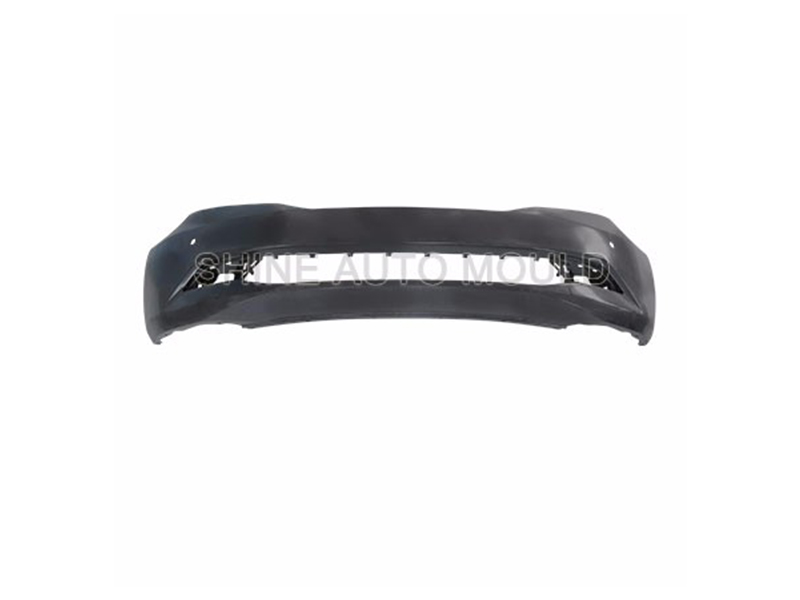Boost Your Production: Key Practices for Maintaining Bumper Bar Moulds
Wholesale Bumper Bar Mould Supplier

The bumper bar mould plays a crucial role in the automotive industry, shaping the components that provide both safety and aesthetic value to vehicles. Due to the demanding nature of its job, a bumper bar mould must be maintained meticulously to ensure smooth, long-term operation. Regular maintenance, care, and timely repairs can prevent significant downtimes and extend the service life of these vital tools, making them more reliable and efficient over time.
To begin with, the important aspect of bumper bar mould maintenance is regular inspection. Over time, the mould will inevitably experience wear and tear, which can impact the quality of the finished product. It is critical to inspect the mould for any signs of cracking, warping, or excessive wear, particularly in areas subjected to high pressure or frequent contact with raw materials. These inspections should be performed at scheduled intervals, especially after heavy usage. Regular checks ensure that potential issues are identified early, reducing the chances of a major malfunction that might result in a halt in production. Identifying problems in the early stages allows for more manageable repairs, avoiding costly downtime.
Another essential factor in bumper bar mould upkeep is lubrication. The mould components are subject to frequent movement, and friction can cause significant damage over time. By applying appropriate lubricants to the moving parts, it is possible to reduce friction and prevent premature wear. Additionally, the mould should be kept free from dirt and debris that may accumulate during the manufacturing process. If left unchecked, these particles can damage the mould surface, causing defects in the produced bumper bars. Regular cleaning of the moulds after each cycle or at the end of each production shift helps maintain their efficiency and ensures a smoother production process.
It is also crucial to managing the temperature of the bumper bar mould properly. During the injection molding process, the temperature must be controlled within specific limits to avoid warping or distortion of the parts. Continuous exposure to intense temperatures can cause material fatigue and negatively affect the overall performance of the bumper bar mould. Installing temperature control systems to maintain consistent heat distribution throughout the mould can prevent overheating or cooling imbalances. The right temperature also helps to ensure that the raw material used in the production of the bumper bars sets correctly, enhancing the product’s quality.
When it comes to repairs, prompt attention is key to minimizing downtime. Small cracks or minor damages to the bumper bar mould should be addressed immediately to prevent further deterioration. Professional technicians can often repair such issues with precision, ensuring that the integrity of the mould is maintained. Sometimes, replacing worn-out components such as springs, pins, or guides is necessary to keep the mould functioning properly. It is advisable to keep spare parts on hand to minimize delays in case of damage. The repair process should be thorough, checking all critical parts to ensure they are functioning properly before the mould is put back into operation.
In addition to these practices, proper storage of the bumper bar mould is also an essential element of its longevity. When not in use, the mould should be stored in a dry and clean environment, away from excessive moisture and harsh conditions. Humidity can cause rust and corrosion, while improper storage can cause warping and bending. Using protective coatings or sealants on the mould surface can offer an extra layer of protection, preventing corrosion and ensuring the mould remains in top shape during its idle periods.
Training operators and maintenance personnel are also crucial in extending the life of the bumper bar mould. Proper handling during production can minimize the risk of damage. For instance, applying excessive force or incorrect assembly can cause misalignment or damage to sensitive components of the mould. Regular training ensures that those operating and maintaining the mould understand its complexities and the importance of proper care.
In conclusion, the longevity and performance of a bumper bar mould depend on regular maintenance, careful handling, and timely repairs. A well-maintained mould will produce high-quality bumper bars consistently and efficiently, helping to reduce downtime and improve the overall productivity of the manufacturing process. By incorporating effective maintenance practices, automotive manufacturers can avoid costly repairs and extend the service life of their moulds, ensuring that production runs smoothly and meets industry standards.




 Search...
Search... English
English



.jpg)


